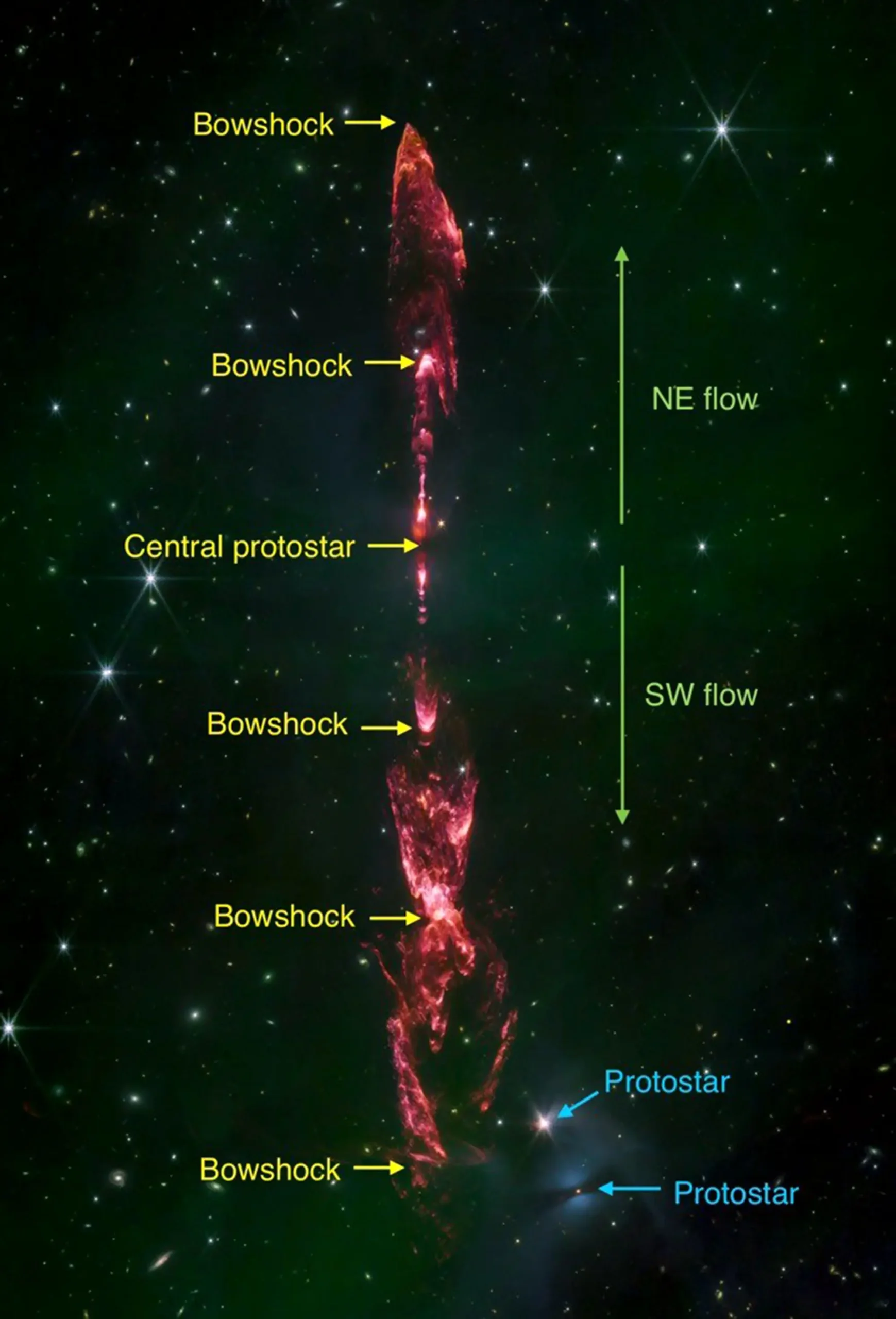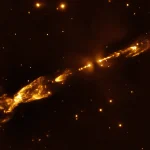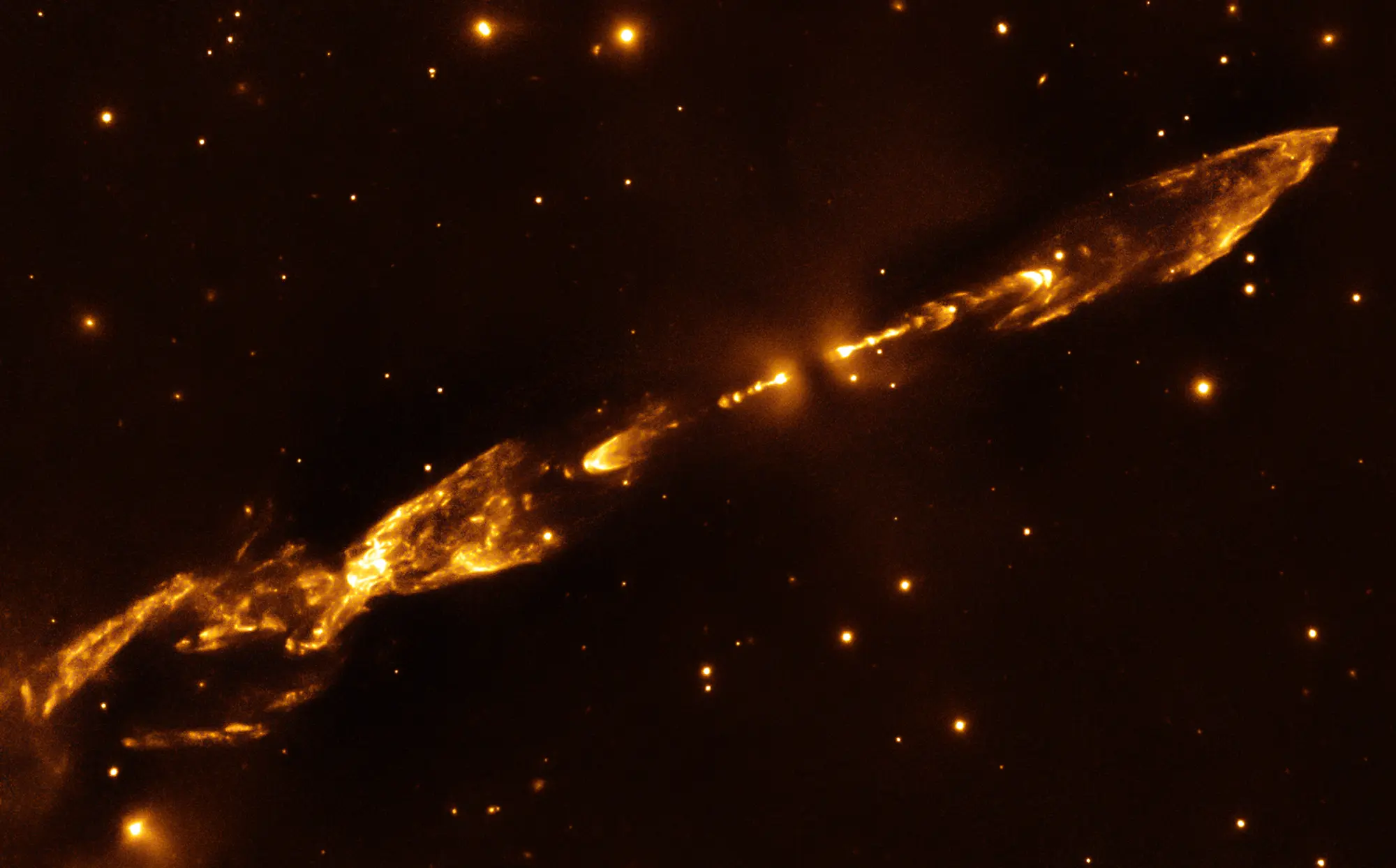James Webb Space Telescope has captured the birth of another star in a stunning image. The image shows the star HH 212, which is located about 1,300 light-years from Earth.
HH 212 was first discovered in 1993 near the Orion Nebula, and astronomers have spent the past thirty years photographing it to reveal how the budding star slowly formed.
However, according to Mark McCaughrean, a senior advisor to the European Space Agency, this capture represents a step forward as it is the “first time” scientists have been able to see a “good color image of the protostar,” which was not possible with ground-based telescopes.

The new image reveals complex details about star formation, including symmetric pink gas emission clouds coming from both poles of the protostar, where the birth of the star was captured. McCaughrean claims that these neon explosions, called jets or outflows, are a byproduct of star birth and that the vibrant hues indicate the presence of molecular hydrogen.
McCaughrean said in an interview with the BBC, “The central, bubbly ball of gas is spinning as it collapses. But if it spins too fast, it will break apart. So something has to happen to get rid of the angular momentum. We think these are the jets and outflows.”
Launched in December 2021, the James Webb Space Telescope is located at a place called Lagrange Point 2, more than a million miles away, and is capable of capturing images from deep space that provide clues to the formation of both stars.











